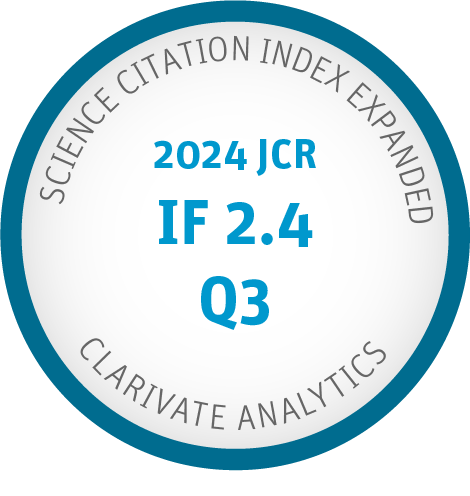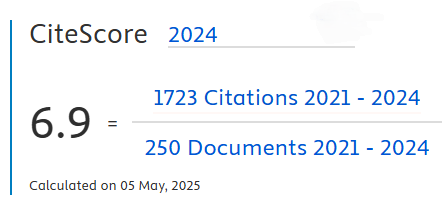UPMVM: A Metrics Verification Model for Urdu Poetry
DOI:
https://doi.org/10.9781/ijimai.2025.09.001Keywords:
Arud Meters, Natural Language Processing, Pattern Matching, Poetry, Urdu GhazalAbstract
Urdu poetry retains a prominent position in the cultural heritage of Urdu language. Rhyme schemes and meters are frequently employed in poetry, which follow specific patterns and structures. Natural Language Processing has the capacity to recognize and analyze these patterns, which is beneficial in the investigation of poetic forms. This research presents the UPMVM (Urdu Poetry Metrics Verification Model), a novel rulebased architecture, designed for detecting meter of any given Urdu ghazal verse. In this work, we propose an algorithm that consists of sixteen steps that identifies the Arud meter in the Urdu verses using a custom developed system. This application will not only assist professional poets but also enable students to examine poetry within the framework of prosody principles. The accurate analysis of the prosody of any poetry relies on the act of uttering words rather than on a written record. UPMVM consists of two phases: 1) The primary objective of the initial phase is to consolidate all available literature of the Arud system into a unified digital platform, then develop individual and combined DFA of each identified meter for pattern recognition; 2) the second phase is about the algorithmic implementation. All these rhythmical patterns are matched with 290 Arud meters and their sub-meters developed during this study. The implementation strategy of phase 2 comprises of five essential sub-phases including tokenization, orthography, syllable identification, weight assignment, and meter detection. For evaluation of the proposed method, three different datasets are used for feature extraction, token identification and performance measurement for identification of rhythmic patterns in Urdu poetry. The UPMVM model reached to promising outcome with an average accuracy of 94%.
Downloads
References
M. Dar, “Authorship attribution in Urdu poetry,” Information Technology University (ITU), Lahore, 2020.
Z. Sherif, M. Eladawy, M. Ismail, and H. Keshk. “A Proposed System for the Identification of Modem Arabic Poetry Meters (IMAP),” In 15th International Conference on Computer Engineering and Systems (ICCES), pp. 1-5. IEEE, 2020.
M. OajLakhnawii, “Mikyass-ul – Ashaar,” Prosody book, 1875.
S. Alam Sarwer, “Kitab-r-Arooz,” 2008.
M. Najmal-ul-Ghani, “Bahr-ul-Fasahet,” Tayaba Noor printers, Lahore, 2018.
P. W. Frances, and A. Khaliq, “Urdu Meter: A Practical Handbook,” FW Pritchett and KA Khaliq, 1987.
G.D. Pybus, “A Text-book of Urdu Prosody and Rhetoric,” Baptist Mission Press, 1924.
N. Balghi, “Tafheem ul Arud,” Behar Afseet press, Patna, 1985.
A. Jabbar, S. Iqbal, M.U. Khan, “Analysis and development of resources for Urdu text stemming,” Language and Technology, vol. 1, no. 1, pp. 40- 5, 2016.
J. Abdul, S. ul Islam, S. Hussain, A. Akhunzada, and M. Ilahi, “A comparative review of Urdu stemmers: Approaches and challenges,” Computer Science, vol. 34, 100195, 2019.
A.A. Raza, A. Habib, J. Ashraf, M. Javed, “A review on Urdu language parsing,” International Journal of Advanced Computer Science and Applications, vol. 8, no. 4, pp. 93-97, 2017.
N. Tariq, I. Ejaz, M.K. Malik, Z. Nawaz, and F. Bukhari, “Identification of Urdu ghazal poets using SVM,” Mehran University Research Journal of Engineering & Technology, vol. 38, no. 4, pp. 935-944, 2019.
AA. Raza, A. Athar, and S. Nadeem, “N-gram based authorship attribution in Urdu poetry,” In Proceedings of the Conference on Language & Technology, pp. 88-93, 2009.
R. Shahid, and Z.A. Qureshi. “Exploratory data analysis of urdu poetry,” arXiv preprint arXiv:2112.02145, 2021.
M.A. Alnagdawi, H. Rashideh, and F. Aburumman, “Finding Arabic poem meter using context free grammar,” Journal of Communication and Computer Engineering, vol. 3, no. 1, pp. 52-59, 2013.
R. Shalabi, G. Kana’an, and A. AL-Jarah, “Computing System for Analyzing Arabic Poems Meter,” Yarmouk Research, Yarmouk University, 2003.
O. Alsharif, D. Alshamaa, N. Ghneim, “Emotion classification in Arabic poetry using machine learning,” International Journal of Computer Applications, vol. 65, no. 16, 2013.
M.Y. Dahab, A. AlAmri, B. Bagasi, E. AlMalki, O. AlBeshri, “Automatic Identifying Rhythm of Arabic Poem, ” International Journal of Computer Applications, vol. 975, 8887, 2016.
K. Baïna, H. Moutassaref, “An efficient lightweight algorithm for automatic meters’ identification and error management in Arabic poetry,” In Proceedings of the 13th International Conference on Intelligent Systems: Theories and Applications, pp. 1-6, 2020.
B. Abuata, A. Al-Omari, “A rule-based algorithm for the detection of Arud meter in CLASSICAL Arabic poetry,” The International Arab Journal of Information Technology, vol. 15, no. 4, pp. 661-667, 2018.
A.I. Omer, M. P. Oakes, “Arud, the metrical system of Arabic poetry, as a feature set for authorship attribution,” IEEE/ACS 14th International Conference on Computer Systems and Applications (AICCSA), IEEE, pp. 431-436, 2017.
F. Alqasemi, A.H. Salah, N.A. Abdu, B. Al-Helali, G. Al-Gaphari, “Arabic poetry meter categorization using machine learning based on customized feature extraction,” International Conference on Intelligent Technology, System and Service for Internet of Everything (ITSS-IoE), pp. 1-4, 2021.
A. M. Mutawa, and A. Ayshah, “Determining the Meter of Classical Arabic Poetry Using Deep Learning: A Performance Analysis,” Frontiers in Artificial Intelligence, vol. 8, 1523336, 2025.
W.A. Yousef, O.M. Ibrahime, T.M. Madbouly, M.A. Mahmoud, “Learning meters of Arabic and English poems with Recurrent Neural Networks: a step forward for language understanding and synthesis,” arXiv preprint arXiv:1905.05700, 2019.
S. Zeyada, M. Eladawy, M. Ismail, H. Keshk, “A Proposed System for the Identification of Modem Arabic Poetry Meters (IMAP),” In 2020 15th International Conference on Computer Engineering and Systems (ICCES), IEEE, pp. 1-5, 2020.
M. R. Abbas, K. H. Asif, “Computing prosody to detect the Arud meter in Punjabi Ghazal,” Sādhanā, vol. 45, 246, 2020.
A. Kaushal, K. Dutta, “Analysis of Performance Metrics for Classification of Punjabi Poetry using Machine Learning Techniques,” In 2023 International Conference on Artificial Intelligence and Smart Communication (AISC), IEEE, pp. 680-684, 2023.
A. Kurt, M. Kara, “An algorithm for the detection and analysis of arud meter in Diwan poetry,” Turkish Journal of Electrical Engineering and Computer Sciences, vol. 20, no. 6, pp. 948-963, 2012.
R. Shalabi, G. Kana’an, A. AL-Jarah, “Computing System for Analyzing Arabic Poems Meter,” Yarmouk Research, Yarmouk University, 2003.
O. Alsharif, D. Alshamaa, N. Ghneim, “Emotion classification in Arabic poetry using machine learning,” International Journal of Computer Applications, vol. 65, no. 16, 2013.
A. K. Al-Talabani, “Automatic recognition of Arabic poetry meter from speech signal using long short-term memory and support vector machine,” ARO-The Scientific Journal of Koya University, vol. 8, no. 1, pp. 50-54, 2020.
Aruuz, Meters List, accessed April 10, 2022, https://aruuz.com/resources/meterslist.
Rakhta, Meter detection, accessed April 12, 2024, https://www.rekhta.org/.
S. Zeeshan, Aruuz, GitHub repository, accessed March 25, 2022, https://github.com/sayedzeeshan/Aruuz
M. S. Al-Shaibani, Z. Alyafeai, I. Ahmad, ”Meter classification of Arabic poems using deep bidirectional recurrent neural networks” vol. 136, pp. 1-7, 2020.
A. Muztar, Doctoral thesis “Urdu ka Aruzi Nizam and Asri Takaza”, June 2022.
A. Daud, W. Khan, D. Che, “Urdu language processing: a survey,” Artificial Intelligence Review, vol. 47, pp. 279-311, 2017.
R. Russell, “Some problems of the treatment of Urdu metre,” Journal of the Royal Asiatic Society, vol. 92, no. 1-2, pp. 48-58, 1960.
JFLAP, JFLAP: Interactive Automata Theory Tool, accessed March 20, 2022, https://www.jflap.org.
W. Ruibo, J. Li, “Bayes Test of Precision, Recall, and F1 Measure for Comparison of Two Natural Language Processing Models,” In Proceedings of the 57th Annual Meeting of the Association for Computational Linguistics, Association for Computational Linguistics, pp. 4135–4145, 2019.
Downloads
Published
-
Abstract311
-
PDF37








